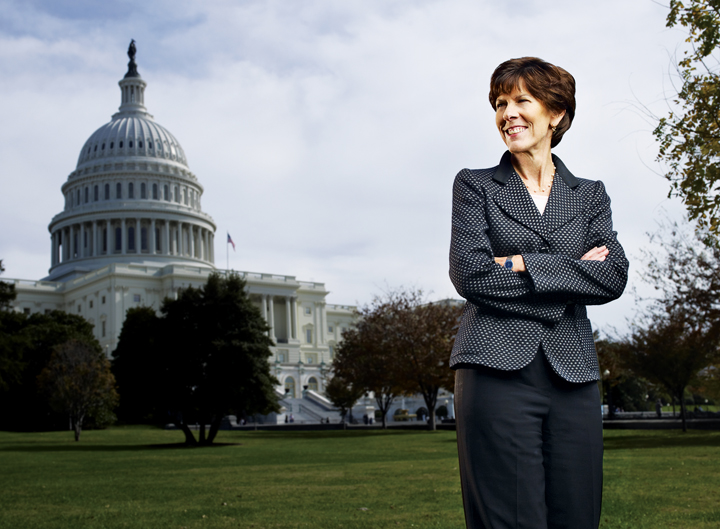Most multinationals now have a chief sustainability officer (CSO) on the management team, but what does he or she do? There is no right answer — it depends on what the multinational does, and where and how it does it. The common denominator across most companies is ensuring the organization does business in as environmentally non-disruptive a manner as possible. But the bigger the organization, the more complex the role becomes. A case in point is DuPont, operating in about 80 countries, which makes products for such industry sectors as agriculture and food, building and construction, communications and transportation.
Linda J. Fisher (pictured above) is DuPont’s CSO — she is also Vice President, DuPont Safety, Health & Environment. Fisher joined the company in 2004, bringing with her a deep understanding of environmental affairs from having held several posts at the federal Environmental Protection Agency. In a recent interview with Site Selection Editor in Chief Mark Arend, Fisher outlined the complexity of her role in the public policy, scientific and energy contexts.
Site Selection: How does your organization define the chief sustainability officer role?
Linda J. Fisher: My role is to provide strategic direction for the company on key sustainability issues and initiatives, such as reducing our carbon footprint and developing renewable energies. My team and I continuously work to integrate sustainability into the business through scientific processes and innovation, and we’re always on the lookout for opportunities to bring it to the forefront of product development.
SS: What sort of staff or team do you manage in this capacity?
LJF: At DuPont the CSO leads a team of people responsible for Government Affairs, Public Affairs, Regulatory Affairs, Safety, Health and Environment, and Sustainable Growth.
SS: Is there an argument for having multiple CSOs with an organization as large and diversified as DuPont, or is a centralized approach the best solution?
LJF: While there is only one CSO for the corporation, we are structured so that each of our key 13 business units as well as other divisions within the company all have sustainability leaders and team members with sustainability as part of their job. These team members are tasked with looking holistically at sustainability and environmental impacts within their business, their product line, or their research and development techniques.
SS: How is the role of CSO evolving in corporate
LJF: The role is transforming from being focused on compliance and regulatory issues to be more focused on opportunities for growth. Additionally, the issues that top the public agenda change over time. There is a significant focus on climate and energy now, but it is my job to understand what is next.
SS: What are some typical deliverables expected of your team?
LJF: Tracking and reporting on progress against our 2015 Sustainability Goals, progress on integrating sustainability into the strategic processes in the company, and positioning for leadership in emerging areas in sustainability.
SS: On whom do you rely (in general terms) in the business units for collaboration in executing your organization’s sustainability program?
LJF: At DuPont, implementation is the responsibility of the businesses, so I work closely with the business presidents and other functional leaders to collaborate on and implement that strategy and actions to meet our sustainability commitments.
SS: What role do managers of corporate real estate currently play in the organization’s ability to meet its sustainability objectives?
LJF: While we don’t have specific sustainability commitments in the real estate area, we do have commitments that take into account our total energy and water use. Real estate leaders have a role in understanding how we are managing our buildings and sites relative to these areas and then assuring that those areas contribute towards our overall progress.
SS: How can managers of corporate real estate in the broader business world play a bigger role in their companies’ sustainability plans? Should they play a bigger role?
LJF: Buildings represent about 40 percent of total energy use for society. Corporate real estate can play a bigger role in making progress against the goal of “Net Zero Energy Use in Buildings by 2050.” The World Business Council for Sustainable Development had a three-year project. The final product included a set of recommendations for companies. There are also policy activities that could help make progress, so [they can] be more involved in the policy arena at the local, state, and federal level to encourage the policies that incent the best behaviors and discourage behaviors that don’t drive progress.
